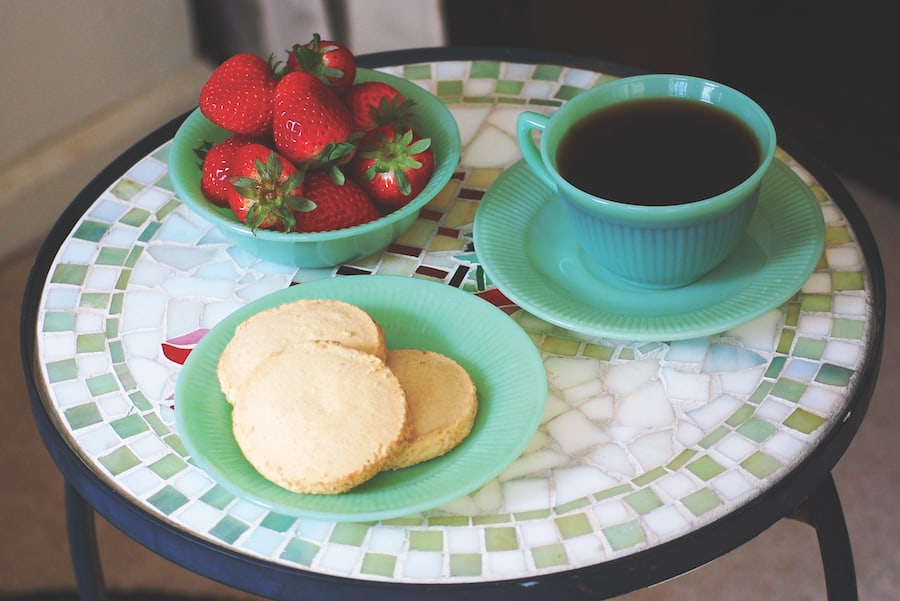In the early part of the last century, a unique type of glassware was created that would one day become known as jadite. Sometimes referred to as opal or opaque ware, the look of this unique glass was inspired by the luster of opal and the color of jade. The method used to make jadite involved adding green glass scraps to an established milk glass formula. Early jadite also contained uranium oxide, which was used to enhance the green hue. Since uranium was only used prior to World War II, its presence or absence is helpful in determining the age of particular jadite items because glass that contains uranium will glow when exposed to black light.
Although many companies produced similar green glass jadite-style products, most dedicated collectors concentrate on pieces made by three manufacturers: the McKee Glass Company, Jeannette Glass Company and Anchor Hocking Glass, which included jadite in their well-known Fire-King line.
The McKee Glass Company’s creation of glassware and dinnerware in the colors of “Skokie” green and jade in 1930 marked the introduction of jadite-style items into the glassware market on a significant scale. McKee’s only complete dinnerware line of green opaque glassware was made by the company in a laurel pattern. Their kitchen accessory line and specialty items included mixing bowls, shakers, canisters, refrigerator dishes, juice reamers, vases and punch bowl sets, to name a few.
Jeannette Glass Company began producing similar wares in 1932. Although they did not offer a dinnerware line, they were in direct competition with McKee in kitchenware and accessories. Their newly introduced glassware was officially called “Jadite,” which became the generic term for opaque green glass manufactured by any maker.

Over a decade later, in 1945, Anchor Hocking Glass Corporation began producing jadite-style glass in their Fire-King division. They called this product “Jade-ite.” Some of their pattern names were Alice, Charm, Shell, Jane Ray and Restaurant Ware. By the 1950s they had expanded their existing lines to include vases, refrigerator dishes, pitchers and both mixing and batter bowls. Anchor Hocking continued to produce Jade-ite glassware until 1975.
People often ask about the best way to identify Jadite or Jade-ite. Basically McKee is marked with “McK,” while Jeannette used the letter “J” inside a triangle. Anchor Hocking is often marked with their Fire-King Oven Ware logo. However, as any avid collector knows, not every piece of glassware is marked. One hint for determining authenticity is that older pieces are heavier than newer reproductions. Experts will also say that the milk glass in these early opaque wares has a specific look. The best way to learn about jadite is to go out and handle the glass in antiques shops and malls and at auctions. Ask questions of antiques dealers and store owners as you shop. Browse online at www.pinterest.com to view large private collections of jadite. Or peruse Amazon, where you can find an array of books containing identification markings and price guides.
Beginning collectors should know that when it comes to identifying jadite made by any manufacturer, caution is advised. There are many reproductions in the marketplace as well as fake and faux jadite products.
One legitimate source for jadite reproductions is Martha Stewart’s company, Martha by Mail, which has been selling her jadite line since the mid-1990s. In addition, the popular restaurant chain Cracker Barrel sells a variety of reproduction pieces in their store gift shops. Not surprisingly, Joanna Gaines has also entered the reproduction arena, with jadite featured in her “Hearth and Hand With Magnolia” accessory line. Dedicated fans can find Joanna’s reproductions at Target. Mosser Glass, available online, is another jadite source.
When accessorizing with jadite, it is perfectly acceptable to mix old and new. For example, that newer jadite cake plate you may have recently purchased works well with cups and saucers from the 1930s.
For the very daring avant-garde jadite devotee, there are actually “jadite sinks.” Visit www.retrorenovation.com and search for “farmhouse sink.” Or merely go to your favorite search engine and type in jadite sinks. You’ll be surprised at what pops up.
Whether you are a purist who collects vintage pieces or a newbie who simply loves the color green, the marketplace has never been more welcoming.
Happy Hunting.
